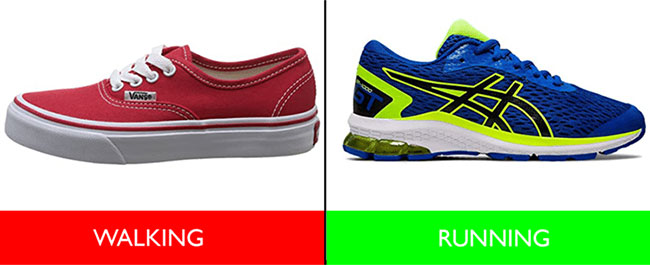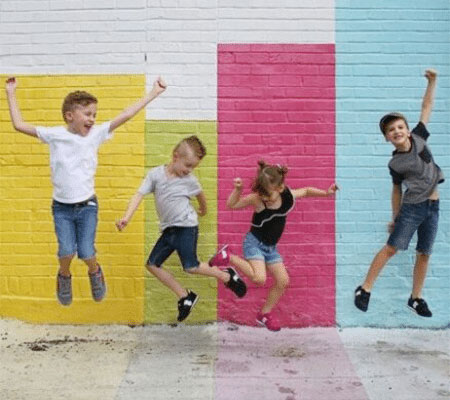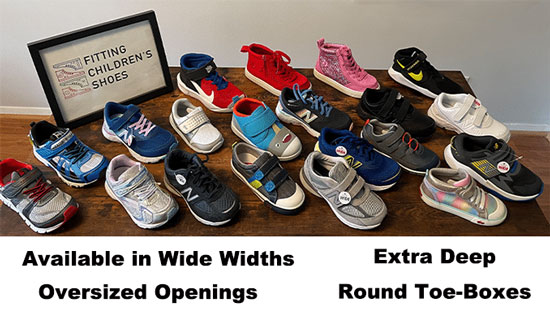The Most Comfortable Kids’ Shoes – From Their First Steps to Their Teenage Years!
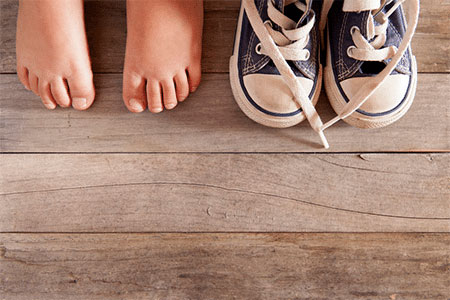
I am going to show you a list of supportive, durable, and comfortable shoes that are capable of accommodating children with different foot shapes such as narrow, medium, wide, or extra wide feet. Choosing the correct pair of shoes for your child will save you a lot of time and money in the long run.
Key Shoe Features for Comfort and Foot Health
Your kids’ shoes should be lightweight and flexible to allow the feet to move naturally with a stable base of support. They should be made of leather to allow your child’s feet to breathe properly. Materials like leather and canvas are the best choices when it comes to choosing your kids’ shoes because are sturdy, breathable, and flexible. They stretch and soften with wear, which is ideal for active, growing feet.
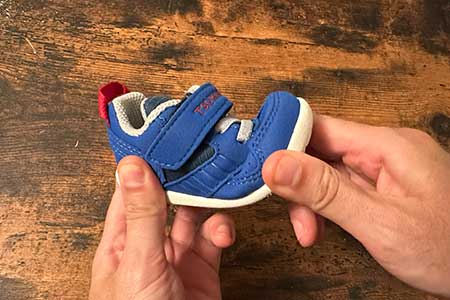
The Importance of Wearing the Correct Shoe Size
Shoes that are too small hinder the proper growth of the foot, diminishing blood circulation, causing painful blisters, ingrown toenails and in simple words, hurt your kids’ feet. Shoes that are too large can create blisters on your children’s feet as well as compromise their stability, which leads to falls and injuries.
I created a virtual shoe fitting service that will help you retrieve your child’s shoe size from home. In that article I help parents determine their child’s exact foot size and whether the child has narrow, medium, wide, or extra wide feet. I also will be able to tell you whether your child has a high instep or not.
Let’s take a look at the most comfortable kids’ shoes from their first steps to their teenage years.
Shoes for Babies Who Are Learning How to Walk
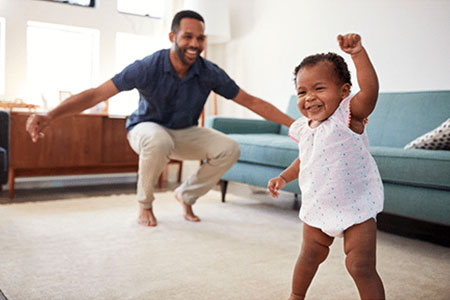
Baby feet contain more cartilage than bones. Though the feet are likely to develop completely by the age of two, the bone doesn’t develop and harden entirely until your child’s 18th birthday.
When babies are learning how to walk they need a lightweight and flexible shoe that emulates barefoot walking However, when you have your babies with you at home, leave them barefoot to allow for healthy foot development.
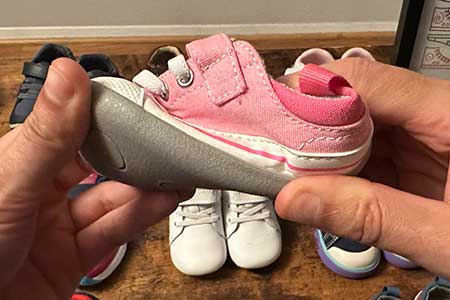
I always recommend that parents look out for stretchy, non-skid or skid-resistant soles for their babies’ shoes. This is because when children are learning how to walk they should wear shoes that are flexible and allow the foot to bend and move as though they were barefoot.
Soft soled shoes provide the perfect structure for a baby who is learning how to walk. These types of shoes allow children to feel the ground under their feet and better control their balance and grip on the floor. Stiff footwear can increase the occurrence of deformity, weakness, and loss of mobility in your kid’s feet. So, be prudent when choosing the first pair of walking shoes for your baby.
Certain first walker shoes come with sensory pods in the bottom to allow your babies to feel the ground underneath them. These are the type of shoes I will describe below. Disclosure: Some links in this post may be affiliate links and we may receive a small commission (at no extra cost to you) when you click our links and make purchases.
Most Comfortable Shoes for Babies Who Are Learning How to Walk
These shoes are available in medium (M), wide (W), and extra wide (XW) widths, so please choose your baby’s shoe width accordingly.
Babies who are only crawling don’t really need shoes. However, they do need booties or pre-walking shoes that don’t bind their feet but do allow them to explore. The shoes need to be flexible instead of providing rigid support. The only function of shoes for crawlers is to provide warmth and protection. You can take a look at the articles on newborn crochet booties and Robeez baby shoes.
Shoes for Toddlers Who Started Walking
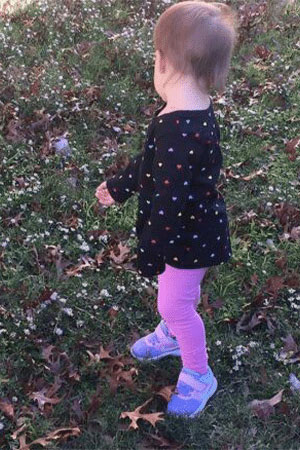
If you have a toddler who is already walking or almost fully stable when walking, you will need a pair of shoes that are still lightweight and flexible but more substantial. We still want the shoes to be lightweight and flexible, but they must also provide more lateral support since your toddlers are on their feet all the time now, putting more pressure on their feet and legs.
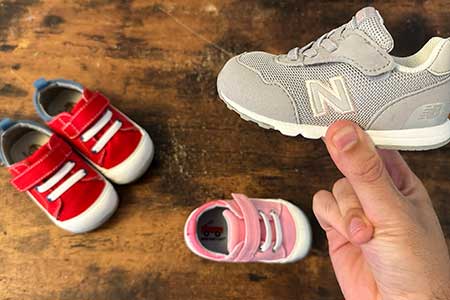
This means that the outsole of the shoe for a toddler who is already walking must be more supportive compared to the outsole of the shoe for a toddler who is learning how to walk.
Your toddler shoes should bend at the toes but no further. If your toddler shoes are too rigid or you are able to bend them in all directions as a spiral, then it’s highly likely that the shoes don’t provide the correct amount of flexibility and stability.
Most Comfortable Shoes for Toddlers
I always advise parents to choose shoes with rubber soles for good traction, thereby preventing slipping or sliding. Below you can find a selection of the best shoes for toddlers (2 and 3 years old) with medium or wide feet.
Shoes for Kids Between the Ages of 4 and 9
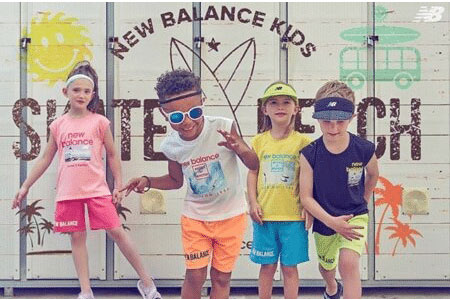
Did you know that our children’s feet are known to withstand 3 times more stress than the average adult’s feet? This is because children take part in numerous high-impact activities. Because children’s feet endure high stress, children must wear shoes with good shock absorption, a well-made footbed, and durable soles.
Flexibility also plays a huge role when you are choosing shoes for your kids because it helps them strengthen the muscles of the feet on their own.
So, what type of materials should shoes be made of for children between these ages? Their shoes should be made of leather, canvas or the newer mesh materials to allow sweat from the feet to evaporate after perspiration.
Most Comfortable Shoes for Kids Ages 4 to 9
The shoes below can fit children with medium (M), wide (W), or extra wide feet (XW).
The Best Shoes for Older Kids – 13 Years Old and Up
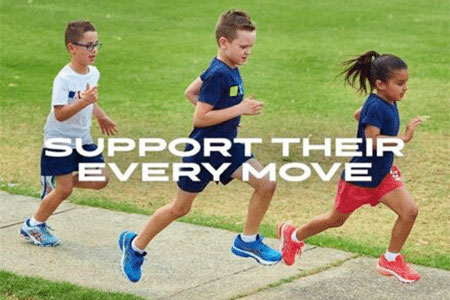
After the age of 13, children start getting involved in more competitive sports, and they increase the stress on their feet and legs to a whole new level. The insole of the shoes should be constructed out of proper absorbent material. Padded insoles are acceptable as well but most children do not require that special arch support.
At this stage, we look for shock absorption and flexibility. Let me show you a selection of the most supportive, durable, and comfortable shoes for older children.
Most Comfortable Shoes for Older Kids
Below you can find a selection of the best shoes for older kids with medium (M), wide (W), or extra wide feet (XW).
Unsure About What Shoe Size You Should Order?
In each of the descriptions of the shoes, I indicate whether you need to order a half size or a whole size bigger than your child’s current foot size to provide the correct amount of growing room.
*A half a size bigger translates to 3/16 of an inch or 0.4 centimeters of space between your child’s longest toe and the end of the shoes.
*A whole size bigger translates to 3/8 of an inch or 0.8 centimeters of space between your child’s longest toe and the end of the shoes.
Are Any Other Shoe Choices Available?
If none of these shoes are available in your child’s shoe size or if you need the shoes to be made of a specific color don’t hesitate to email me to: fittingchildrensshoes@gmail.com
It is important to wear the right shoes for different activities to prevent foot problems and injuries. I presented you with a description of reasonably-priced, good quality, best-fitting shoes that are available in different widths.
Have you found a particular shoe style or shoe brand that has worked well for your child’s feet? Please share your findings in the comments section below so other parents can benefit from your feedback.

